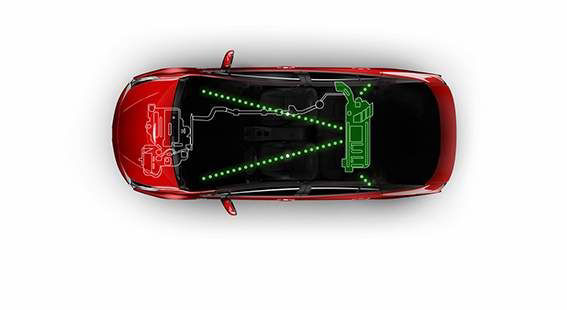Select a province & language
Entrance to this website assumes you have read and agree to these Legal Terms and Conditions and the Privacy Policy.
Entrance to this website assumes you have read and agree to these Legal Terms and Conditions and the Privacy Policy.
Energy storage has long been a key barrier in the quest for eco-friendly transport. Electric cars need regular recharging, and renewable energy sources aren’t consistent enough to power consumer vehicles (after all, it’s not sunny or windy all the time).

Researchers predict that machine learning could similarly solve our energy storage struggle by searching for new battery materials and fuel cells at a rate exponentially faster than the human brain. It’s a thrilling possibility—so much so that Toyota’s research arm, the Toyota Research Institute (TRI), announced in March 2017 it was investing $35 million into teams at MIT, Stanford, and other prominent universities that are tackling this very issue.
The team from MIT, joined by colleagues at Stanford and Purdue University, are seeking to develop a more efficient lithium-ion battery (you’ve likely already got one in your cellphone). These batteries are immensely practical, but also highly complex and difficult to recharge. Powered by their support from Toyota, the researchers are applying machine learning to examine potential new materials and evaluate their effectiveness using detailed simulations. Given the independent nature of computers engaging in machine learning, it’s likely that the MIT team will also stumble upon other exciting discoveries in the process.
So what exactly will these computers be learning? They'll be scouring microscopic video footage of rechargeable batteries to discover how their particles charge and discharge at the nanoscale, then deciding if any other materials could better expedite this process. “By applying machine learning methods to these videos of the inner workings of rechargeable batteries — using each pixel and each frame as a measurement — we can tease out models that better fit the experimental data,” researcher Martin Bazant explained on the MIT website.
The MIT team has already discovered a significant breakthrough in just six short months of research. Experts believe that the lithium-air (or lithium-oxygen) battery could provide three times as much power for a given weight as lithium-ion batteries, but they’ve yet to find the exact materials to create this better battery. Thanks to the work of the MIT team, the compound lithium iodide (Lil) has been effectively discredited as a potential resource on the path to lithium- air.

Toyota has long been known for its commitment to eco-friendly vehicles since it launched its popular Prius model (launched in 1997, with over 10 million sold). The company’s current organizational vision is to reduce global average new-vehicle CO2 emissions by 90% by 2050, and the materials found through this endeavour will allow Toyota to expand its own eco-friendly offerings. All of the research findings supported by TRI will also remain open and publishable in scientific journals, which will likely enable them to influence sustainable automotive design around the world.
The participating university research teams have been buoyed by the prospect of exploring practical applications while maintaining an experimental, creative mindset. “I’m confident we will push boundaries in basic scientific discoveries, nanomaterials, catalysis, and energy systems that go beyond just new innovation a few years down the road,” said MIT researcher Yang Shao-Horn, as quoted on the MIT website.
It’s an enthusiastic sentiment, and one that was recently echoed in TechCrunch by reporter Darrell Etherington: “Toyota’s AI research wing once again stands out as an example of long-term planning in an industry that loves short-term marketing wins,” wrote Etherington. “A marked distinction in automotive tech today.”